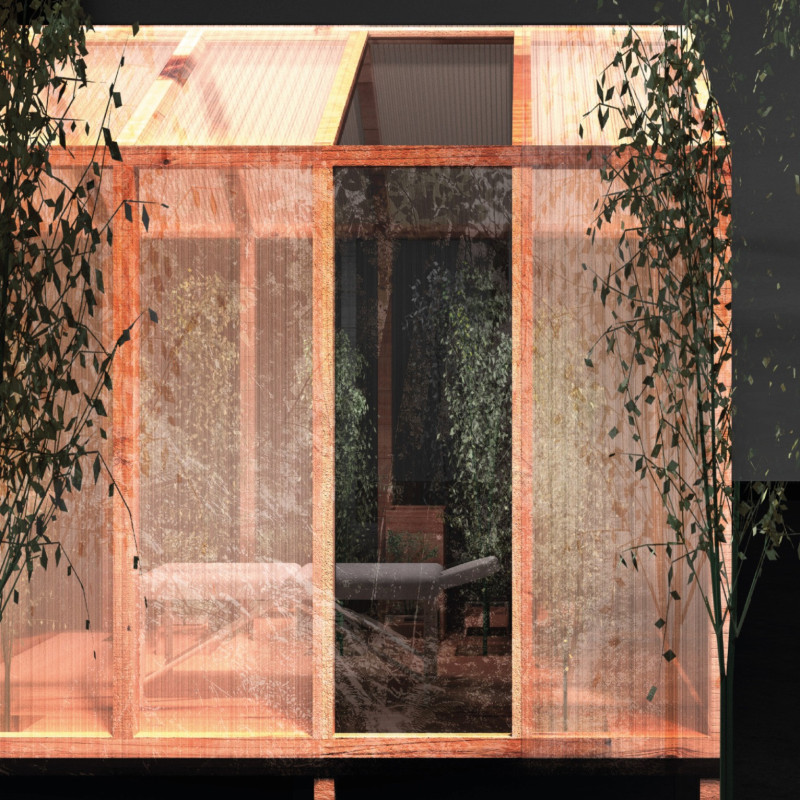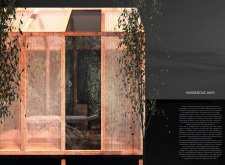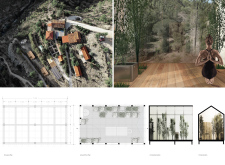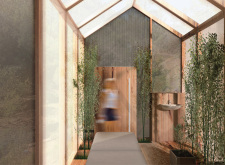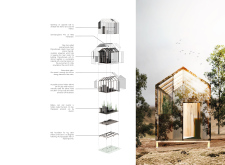5 key facts about this project
At its core, "Indigenous Hues" represents a commitment to sustainability and a sensitivity to the environment. The design reflects an understanding of how architecture can influence human experience by integrating natural elements and promoting biodiversity. The concept revolves around a calming retreat that encourages residents to immerse themselves fully in their surroundings, drawing inspiration from the innate beauty of the site.
Functionally, the project serves as a multifunctional living space that can accommodate a variety of activities such as relaxation, wellness practices, and social gatherings. The layout prioritizes flexibility, allowing the interior to adapt to different uses. Central to the design are open spaces that promote airflow and natural lighting, enhancing the quality of life inside the structure. Large windows and strategically placed openings invite the outside in, creating a seamless transition between indoor and outdoor spaces. The careful arrangement of these functional elements showcases the thoughtful balance of aesthetic appeal and practical design.
A distinctive aspect of "Indigenous Hues" is its use of carefully selected materials that echo the project’s commitment to sustainability. Wood forms the main structural material, fostering an organic connection to the environment while being locally sourced. This choice not only minimizes the carbon footprint but also brings warmth to the interior spaces. The introduction of polycarbonate sheets enhances the design’s efficiency by allowing natural light to penetrate while maintaining insulation, showcasing a modern approach to energy efficiency. Additionally, the use of photovoltaic glass underscores a commitment to renewable energy, generating power for the structure and reducing reliance on non-renewable resources.
The architectural details further enrich the project's identity. The sloped roof design allows for effective rainwater drainage, reinforcing functionality while contributing to the aesthetic character of the building. This design choice is an example of how architectural form can respond to environmental realities. Inside, elements such as plant containers integrated into the layout serve not only aesthetic purposes but also promote a connection to nature, inviting residents to engage with their environment actively.
The project's unique design approach is characterized by an emphasis on modularity and adaptability. This allows the structure to be relocated as needed, catering to diverse community needs and changing environmental conditions. Such flexibility maintains the integrity of the architecture, enabling it to serve various functions over time without losing its connection to the site. By being visually and physically connected to the surroundings, "Indigenous Hues" exemplifies a modern architectural ethos that values sustainability, human experience, and emotional well-being.
In exploring this architectural endeavor, one can gain insights into the underlying architectural plans, sections, and designs that bring such concepts to life. The thoughtful layout, creative material choices, and innovative design strategies are evident and contribute to a deeper understanding of how architecture can address both environmental and human concerns. Readers are encouraged to delve into the presentation of "Indigenous Hues" to further appreciate the nuances of this project and explore the architectural ideas that define its essence.


